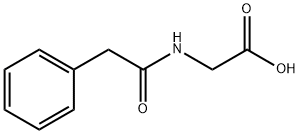CHEMICAL AND PHYSICAL PROPERTIES
| Physical Description | Solid |
|---|---|
| Solubility | 7.3 mg/mL at 11 °C |
| Collision Cross Section | 147.23 Ų [M-H]- [CCS Type: DT, Method: single field calibrated with Agilent tune mix (Agilent)] |
SAFETY INFORMATION
| Signal word | Warning |
|---|---|
| Pictogram(s) |
 Exclamation Mark Irritant GHS07 |
| GHS Hazard Statements |
H302:Acute toxicity,oral H315:Skin corrosion/irritation H319:Serious eye damage/eye irritation H335:Specific target organ toxicity, single exposure;Respiratory tract irritation |
| Precautionary Statement Codes |
P261:Avoid breathing dust/fume/gas/mist/vapours/spray. P305+P351+P338:IF IN EYES: Rinse cautiously with water for several minutes. Remove contact lenses, if present and easy to do. Continuerinsing. |
COMPUTED DESCRIPTORS
| Molecular Weight | 193.20 g/mol |
|---|---|
| XLogP3 | 0.7 |
| Hydrogen Bond Donor Count | 2 |
| Hydrogen Bond Acceptor Count | 3 |
| Rotatable Bond Count | 4 |
| Exact Mass | 193.07389321 g/mol |
| Monoisotopic Mass | 193.07389321 g/mol |
| Topological Polar Surface Area | 66.4 Ų |
| Heavy Atom Count | 14 |
| Formal Charge | 0 |
| Complexity | 209 |
| Isotope Atom Count | 0 |
| Defined Atom Stereocenter Count | 0 |
| Undefined Atom Stereocenter Count | 0 |
| Defined Bond Stereocenter Count | 0 |
| Undefined Bond Stereocenter Count | 0 |
| Covalently-Bonded Unit Count | 1 |
| Compound Is Canonicalized | Yes |
PRODUCT INTRODUCTION
description
Phenylacetylglycine is a N-acylglycine that is glycine substituted on nitrogen with a phenylacetyl group. It has a role as a mouse metabolite and a human metabolite. It is a monocarboxylic acid amide, a monocarboxylic acid and a N-acylglycine. It is a conjugate acid of a phenylacetylglycine(1-).
